Lucky Partners

Brief Synopsis
Cast & Crew
Lewis Milestone
Ronald Colman
Ginger Rogers
Jack Carson
Spring Byington
Cecilia Loftus
Film Details
Technical Specs

Synopsis
David Grant, an artist who draws caricatures in his shabby Greenwich Village studio, wishes book store owner Jean Newton good luck while passing her on the sidewalk. Soon after, Jean is given an expensive dress and decides that David has brought her good luck. She then urges him to buy a sweepstake ticket with her, and he agrees on the condition that if they win, she will take a trip with him before she marries her sweetheart, Freddie Harder. When David stipulates that the trip will be an artistic experiment and kept on a strictly impersonal basis, Freddie agrees to his terms, and Jean accepts to spite Freddie. The lucky partners' ticket is picked in the sweepstakes, and with their winnings they journey to Niagara Falls, followed by a suspicious Freddie. Expecting to catch the couple sleeping together, Freddie breaks down their bedroom door, only to find that David has checked out of the hotel and is driving back to Manhattan. Complications arise when David is stopped on the road and arrested for stealing Jean's car. Summoned to court, Jean and Freddie attempt to explain the situation, but their farfetched story fails to placate the judge. When in the course of their testimony, David admits that he is the famous painter Paul Knight Somerset, who had been jailed for drawing pornography, the trial takes on an air of notoriety. After David and Jean cross-examine each other, the judge fines Freddie for breaking down the door and apologizes to David for his unjust pornography sentence. With justice finally served, David renounces his Bohemian beliefs, and Jean and David declare their love for each other.

Director
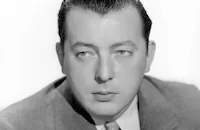
Lewis Milestone
Cast

Ronald Colman

Ginger Rogers

Jack Carson

Spring Byington
Cecilia Loftus
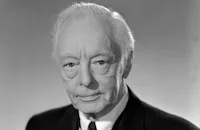
Harry Davenport

Hugh O'connell
Brandon Tynan
Leon Belasco
Eddie Conrad

Walter Kingsford
Lucile Gleason
Helen Lynd

Billy Gilbert
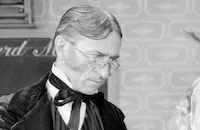
Olin Howland
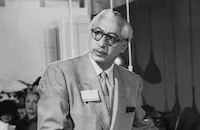
Benny Rubin
Tom Dugan
Otto Hoffman
Alex Melesh
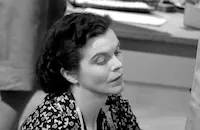
Dorothy Adams
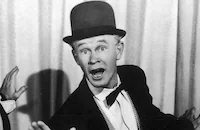
Billy Benedict
Murray Alper

Dick Hogan
Allen Weed
Frank Mills
Dorothy Vernon

Fern Emmett
Bruce Hale
Jane Patten
Max Wagner
Tommy Mack
Murray Alper
George Watts
Al Hill
Ed Dearing
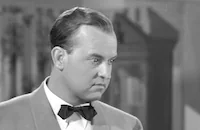
Grady Sutton
Robert Dudley

Charles Halton
Harlan Briggs
Nora Cecil

Lloyd Ingraham
Gayne Whitman
Crew
Henry Berman
Mel Berns
Carroll Clark
Robert De Grasse
John Van Druten
Harry E. Edington
Robert De Grasse
Sacha Guitry
George Haight
Irene
John Miehle
Argyle Nelson
Van Nest Polglase
Gene Rossi
Allan Scott
Darrell Silvera
Dimitri Tiomkin
John E. Tribby
Vernon L. Walker

Videos
Movie Clip


Trailer
Film Details
Technical Specs

Articles
Lucky Partners
In Lucky Partners (1940), Ginger Rogers plays a Greenwich Village bookstore owner engaged to a "schnook from Poughkepsie" (she appears in a noticeably darker hair color that she usually reserved for dramatic roles). One day on the street she runs into a famous painter living incognito after a recent scandal. The gentleman wishes her good luck, for no apparent reason, and soon after, Ginger gets the gift of an expensive hand-me-down gown from a customer. Convinced the painter is her lucky charm, she catches up with him and proposes they split a sweepstakes ticket. He agrees, but only if she will accompany him on a "platonic" honeymoon, an artistic experiment she initially vetos but eventually accepts to spite her jealous boyfriend. Complications, of course, ensue, landing most of the cast in court before everything is settled in favor of good luck and true love.
The picture came about somewhat off-handedly. Ronald Colman had recently formed a production company to capitalize on a successful string of films that included A Tale of Two Cities (1935), Lost Horizon (1937), and The Light That Failed (1939)each of them about as far as you can get from the light romantic fluff of Lucky Partners. Still, this movie and My Life with Caroline (1941) were the best scripts Colman had available at the time, and he needed to make something to keep his company going. Reportedly turning down Rebecca (1940), he hired old friend Lewis Milestone to direct him in this comedy adapted by Allan Scott from an earlier French film, Bonne Chance (1935), written and directed by and starring the flamboyant and controversial Sacha Guitry, often considered the French Noel Coward. Other reports said a number of female stars passed on the project but Ginger Rogers jumped at the chance to work with Colman, turning down the role of Hildy Johnson eventually played by Rosalind Russell in His Girl Friday (1940). "Everything about him, from his voice to his gentlemanly manner, thrilled me," Rogers said in her autobiography. "I'd sit there gazing at him with a perpetual grin of pleasure on my face, just like a fan." Reports that the two did not get along while making Lucky Partners were strongly denied by Rogers.
Milestone said one cast member Rogers did not approve of, however, was Jack Carson. According to the director, Rogers told him she didn't want him to play her fiancé because "he was an extra in one of my pictures," to which he replied, "I can bring up pictures where you were an extra girl! Everyone starts where he can." Milestone had trouble getting Carson to drop his awe of the two stars and assert himself on the set. Eventually, the actor broke through and his co-stars loved his work. Carson went on to become one of the most popular and reliable supporting players in a career that lasted into the early 1960s.
The filming of Lucky Partners was not always smooth. First, shooting had to be halted while script fixes were made by noted playwright John Van Druten and a handful of other writers, including Milestone himself, although only Van Druten and Scott got screen credit. Then Milestone got sick, delaying the shoot another 18 days. The picture ran so far behind schedule that Rogers could not take her customary, contractually mandated break between pictures and had to go immediately into Kitty Foyle (1940), the film that won her the Academy Award.
About Rogers' hair: the production team was shocked by the darkness of it when the usually blonde star showed up on set. Many reports said RKO, Rogers' home studio, forced various hair colors on her, but she insisted it was always her own doing. Although she defensively noted that it was the character in Lucky Partners she was interested in, not the glamour, and that she believed dark hair was right for the role, she eventually admitted it was a little too dark and a bit of a mistake. Always concerned about her looks on screen, Rogers insisted on seeing the rushes every day. According to Milestone, as soon as they began, she would start sliding down into her seat and moaning, convinced she looked terrible. Some reviewers agreed; the Christian Science Monitor said, "Ginger Rogers, always a lively and attractive person, has not been well used...either by her hairdresser or her couturiere."
Lucky Partners drew mixed reviews; some found it effervescent and charming, others slammed it as "neither convincing nor amusing." It didn't do big business at the box office either. Luckily, Rogers recovered quickly with her acclaimed work in Kitty Foyle and a hit comedy, Tom, Dick, and Harry (1941), both featuring the brunette (some sources say she had dark red hair) that had fortunately become lighter and more lustrous over time. Colman had to suffer through the disappointment of his company's My Life with Caroline (also directed by Milestone), but was soon back in good standing with The Talk of the Town (1942) and Random Harvest (1942).
Director: Lewis Milestone
Producer: Harry E. Edington, George Haight
Screenplay: Allan Scott, John Van Druten, based on a story by Sacha Guitry (uncredited writing by George Haight, Edwin Justus Mayer, Lewis Milestone, and Franz Schulz)
Editing: Henry Berman
Art Direction: Van Nest Polglase
Original Music: Dimitri Tiomkin
Cast: Ronald Colman (David Grant), Ginger Rogers (Jean Newton), Jack Carson (Frederick Harper), Spring Byington (Aunt Lucy), Cecilia Loftus (Mrs. Sylvester), Harry Davenport (Judge).
BW-100m. Closed Captioning.
by Rob Nixon

Lucky Partners
Quotes
Trivia
Notes
This title of Sacha Guitry's original story was Bonne Chance. According to news items in Hollywood Reporter, the production schedule of this film was delayed because of script problems. Production was stopped in mid-June 1940 when writers John van Druten, Edwin Justus Mayer and Franz Schulz were brought in to rewrite the screenplay. Only van Druten was given credit for his work, and the participation of the others in the final film has not been confirmed. Producer George Haight and director Lewis Milestone also worked on the script, according to the Hollywood Reporter.















